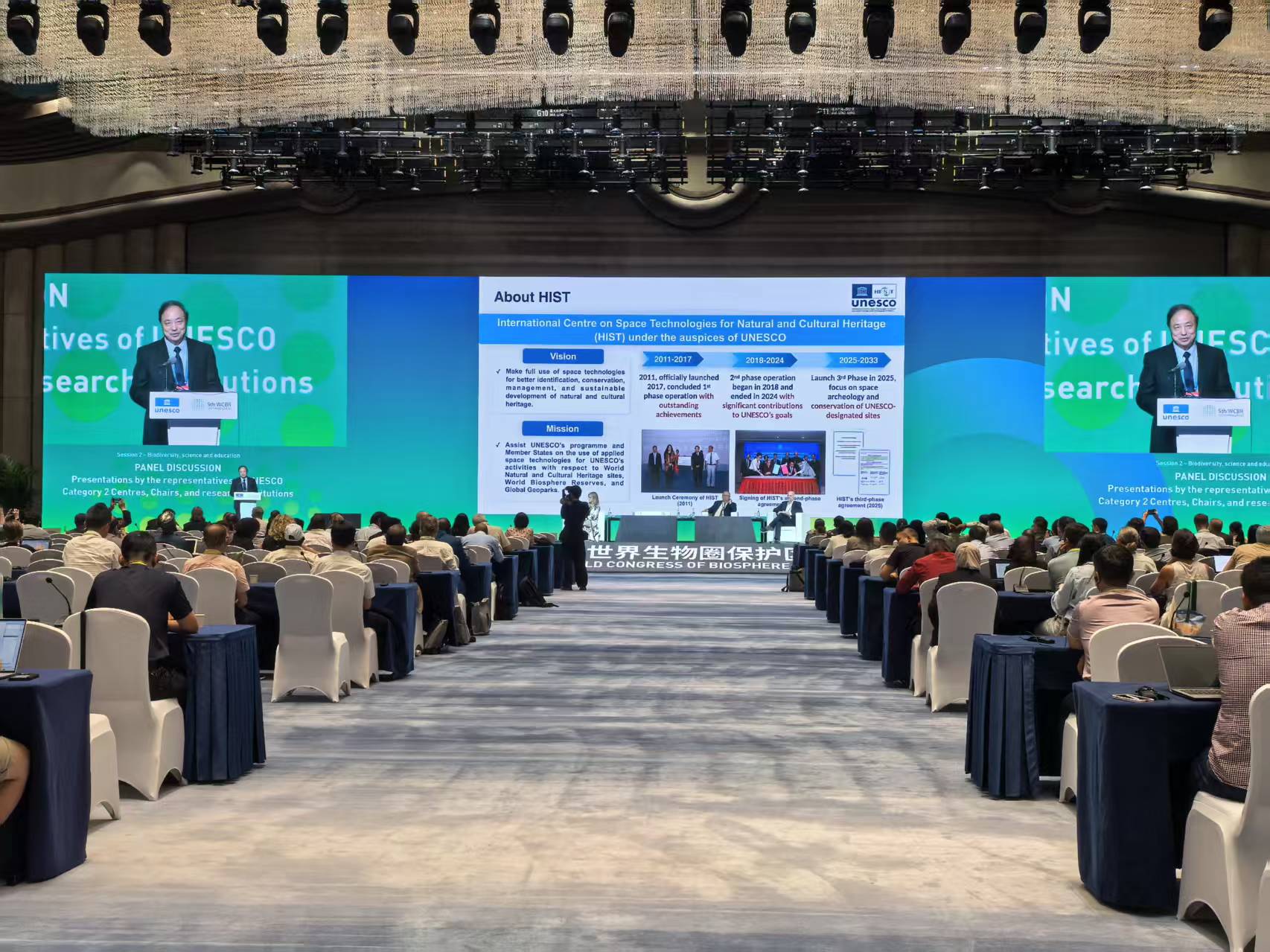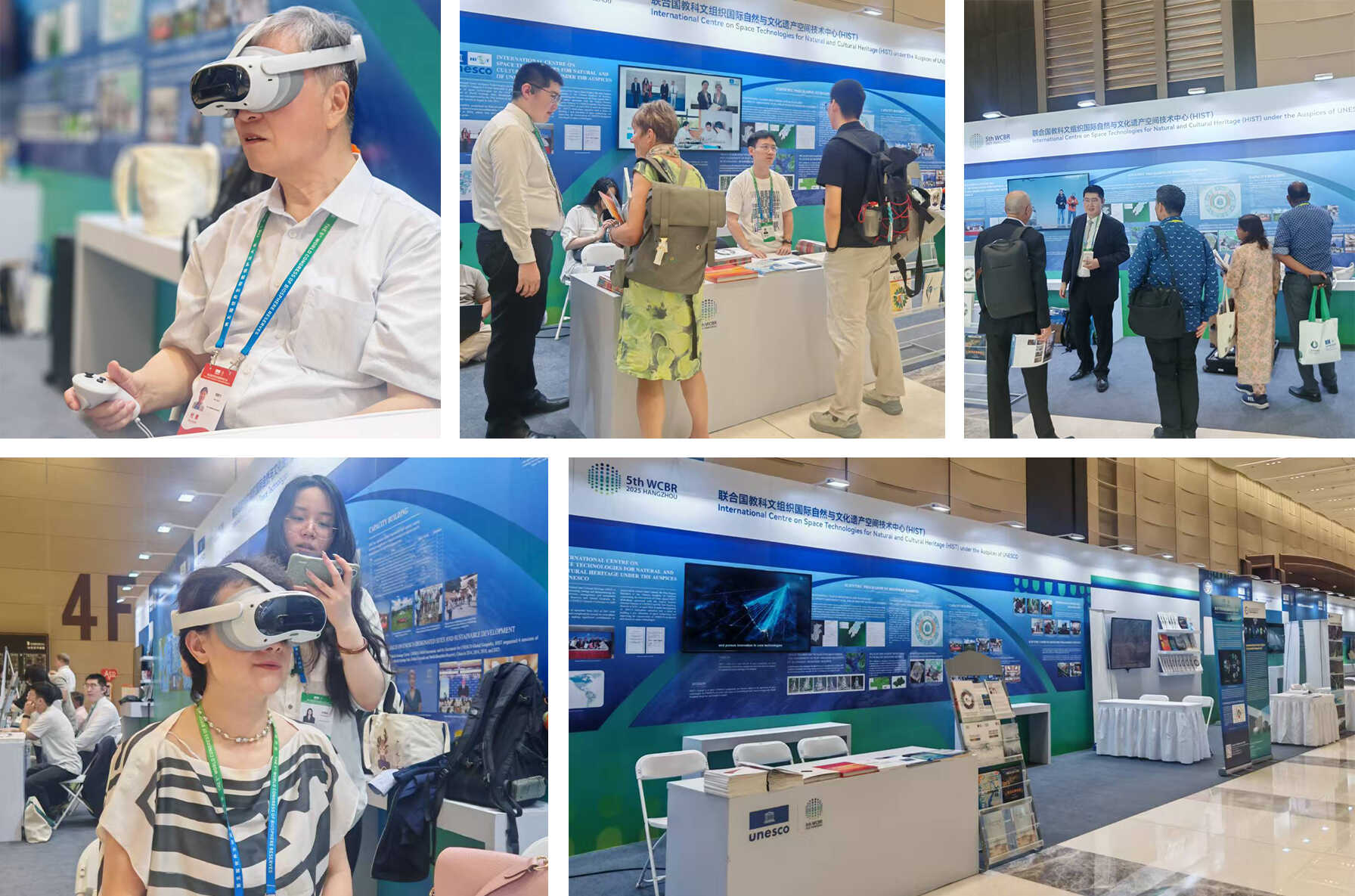HIST Showcases Space Technologies for Biosphere Reserve Protection at 5th World Congress of Biosphere Reserves in Hangzhou
The International Centre on Space Technologies for Natural and Cultural Heritage (HIST) under the auspices of UNESCO highlighted its achievements in applying space technologies to support the conservation of World Biosphere Reserves at the 5th World Congress of Biosphere Reserves, held in Hangzhou, China, from September 22–25, 2025.
At the invitation of UNESCO, HIST joined the opening ceremony, organized a thematic side event, released a new monitoring report on endangered African World Heritage sites, and participated in the international exhibition as the only invited UNESCO Category II Centre.
GUO Huadong, Academician of the Chinese Academy of Sciences and Director of HIST, addressed the plenary session "Biodiversity, Science and Education" on September 23 with a presentation entitled "Space Technologies for the Conservation of World Biosphere Reserves" He presented HIST's achievements in monitoring and assessing biosphere reserves worldwide, which have been recognized by UNESCO and its Member States. Guo also announced plans to launch an International Big Science Programme—Digital Sustainable Development Goals Programm—with global partners, aimed at strengthening interdisciplinary research, enhancing heritage site monitoring capabilities, and sharing multi-source satellite data—including from China's SDGSAT-1—to advance the UN 2030 Agenda for Sustainable Development.
On the same day, HIST co-hosted the side event "Space Technologies Empowering Sustainable Development of Biosphere Reserves" with the UNESCO Man and the Biosphere Programme Secretariat, the International Research Center of Big Data for Sustainable Development Goals (CBAS), and the International Society for Digital Earth (ISDE). Guo delivered the welcome speech and keynote, highlighting HIST's conservation projects in Príncipe Island and Jiuzhaigou and outlining future cooperation to implement the Hangzhou Strategic Action Plan for the UNESCO Man and the Biosphere (MAB) Program and its World Network of Biosphere Reserves (2026-2035).
During the event, Prof. LUO Lei of HIST released the Remote Sensing Monitoring and Analysis Report on Endangered African Natural World Heritage Sites, officially presented it to the UNESCO World Heritage Centre. The report, based on multi-source satellite data from 2000–2023, systematically evaluates the ecological conditions of eight endangered sites in Africa, supporting the implementation of UNESCO’s Africa Priority Strategy.
In addition, Prof. YANG Ruixia represented HIST at another thematic side event—the worlds first UNESCO-led assessment on biodiversity and climate change impacts on listed heritage sites. She presented the results of HIST's joint project with UNESCO on assessing exposure risks of heritage sites to extreme climate events.
HIST also engaged with global participants through its exhibition booth, which featured case studies on applying space technologies in biosphere reserves via visual displays, video screenings, and VR experiences.
Through its active participation, HIST demonstrated its role in advancing space-based solutions for biosphere reserve conservation, strengthened partnerships with UNESCO, IUCN, and international site management authorities, and reinforced its global visibility and influence, laying a solid foundation for HIST’s future development.

Prof. Guo Huadong delivers a presentation at the plenary session.

HIST exhibition booth.



News & Events